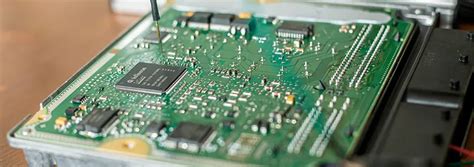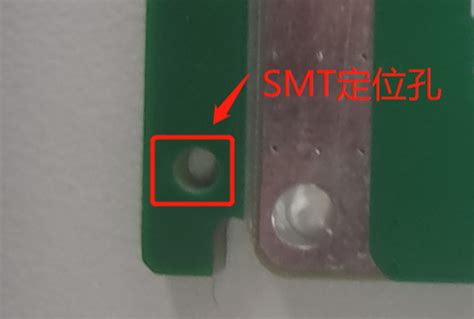Streamlining Electronics Assembly for Enhanced Efficiency
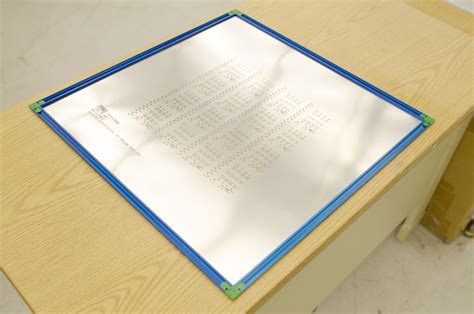
Key Takeaways
In the rapidly evolving landscape of electronics assembly, achieving heightened efficiency is paramount for companies aiming to maintain a competitive edge. Understanding the importance of streamlining processes not only enhances productivity but also contributes to a reduction in costs and waste during pcb assembly operations. Employing innovative techniques such as automation, modular assembly lines, and real-time inventory management can significantly improve workflow.
Utilizing advanced tools like automated pick-and-place machines and sophisticated quality control systems can revolutionize the approach to pcba. These tools not only expedite production but also ensure higher precision, minimizing human error that commonly occurs in manual processes.
Best practices in the field should focus on lean manufacturing principles, which emphasize the elimination of waste and optimization of resources. Incorporating strategies such as just-in-time manufacturing can lead to substantial improvements in efficiency by aligning production schedules closely with demand.
Additionally, examining successful case studies where these practices have been implemented can provide insights into effective strategies for enhancing overall productivity in electronics manufacturing. Future trends indicate a shift towards more adaptive and flexible production techniques that leverage cutting-edge technology, ensuring that companies are not only keeping pace with industry changes but also setting benchmarks for excellence.
"The journey towards enhanced efficiency is continuous; it requires commitment to innovation and adaptability."

Understanding the Importance of Efficiency in Electronics Assembly
Achieving efficiency in electronics assembly is not merely a goal but a necessity in today’s competitive manufacturing landscape. The pcb assembly process, which involves the population of printed circuit boards (PCBs) with electronic components, can significantly impact overall production timelines and costs. By focusing on efficiency, manufacturers can enhance the output of their pcba operations while minimizing errors and maximizing resource utilization. Key factors influencing this efficiency include adopting innovative techniques such as automated assembly systems, which not only streamline workflows but also improve accuracy and reduce cycle times. Moreover, recognizing the importance of training personnel in these advanced processes ensures that human factors contribute positively to production efficiency. Implementing best practices aimed at waste reduction further allows companies to conserve materials and labor, ultimately driving down operational costs. Therefore, understanding and prioritizing efficiency in electronics assembly creates a solid foundation for sustainable growth and heightened competitiveness within the industry.
Innovative Techniques for Streamlined Electronics Assembly
The realm of electronics assembly has consistently evolved, and in the quest for enhanced efficiency, several innovative techniques have emerged. One of the primary techniques includes the adoption of advanced automation processes that streamline pcb assembly. By integrating robotic arms in the assembly line, manufacturers can significantly reduce human error and increase throughput. Another effective method is the use of flexible manufacturing systems (FMS), which allows for quick product changeovers and facilitates the production of pcba in varying quantities without extensive downtime. Additionally, implementing data analytics in monitoring real-time performance can identify bottlenecks and optimize workflow. Techniques such as continuous flow manufacturing enable smoother transitions between assembly stages, minimizing inventory holding times and thereby enhancing overall productivity. Moreover, training personnel in these innovative methodologies fosters a culture of continuous improvement, empowering teams to identify further enhancements throughout the manufacturing process. By embracing these innovative techniques, companies can not only boost efficiency but also improve quality assurance, leading to higher customer satisfaction and reduced operational costs.
Advanced Tools Revolutionizing the Assembly Process
The landscape of electronics assembly is undergoing a significant transformation, primarily driven by the advent of advanced tools that enhance efficiency and accuracy in the assembly process. Notably, innovations in pcb assembly and pcba technologies have been at the forefront of these changes. These tools not only streamline operations but also ensure that each component is assembled with precision, reducing errors and increasing yield. Automated soldering systems, for instance, are designed to minimize human error while maximizing throughput. Moreover, advancements such as vision inspection systems ensure that quality checks are integrated seamlessly into the workflow, allowing for real-time feedback and adjustments.
Additionally, software solutions that facilitate better tracking and management of inventory play a crucial role in optimizing the assembly process. By leveraging data analytics and IoT-connected devices, manufacturers can gain valuable insights into production trends and resource allocation, ultimately leading to more efficient operations. Enhancing collaboration through such digital tools has proven essential in pushing the boundaries of speed and accuracy achievable within electronics assembly. As these technologies continue to evolve, it is evident that they will further redefine best practices for achieving superior productivity and efficiency in manufacturing environments.
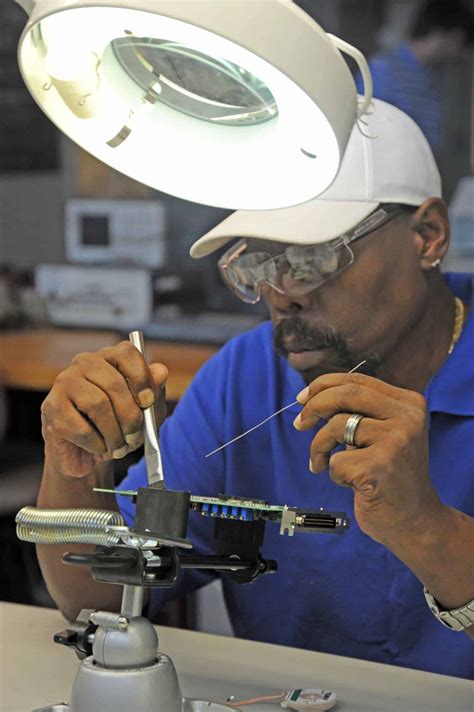
Best Practices for Reducing Waste in Electronics Manufacturing
In the ever-evolving landscape of electronics assembly, minimizing waste is crucial to enhance overall efficiency. One of the best practices for reducing waste in pcb assembly is the adoption of lean manufacturing principles, which focus on maximizing value while minimizing resources. Implementing strategies such as just-in-time (JIT) inventory systems can significantly lower excess stock and reduce material wastage, aligning production closely with demand. Moreover, employing advanced pcba techniques, like modular assembly, allows teams to efficiently manage components and minimize errors, thus cutting down on rework and scrap. Regular training of personnel on emerging technologies and processes is also vital; knowledgeable workers are less likely to commit errors that lead to waste. Another effective approach involves utilizing data analytics to track production metrics, which helps identify inefficiencies within the assembly line. By leveraging these insights, manufacturers can make informed decisions that promote not only waste reduction but also substantial gains in productivity. In essence, integrating these best practices creates a more sustainable electronics manufacturing environment that benefits both companies and the economy at large.
Strategic Approaches for Enhancing Productivity
Enhancing productivity in electronics assembly is crucial for maintaining a competitive edge in today’s fast-paced manufacturing landscape. Implementing strategic approaches helps optimize workflows and ensures efficient use of resources. First, adopting a systematic method for pcb assembly can significantly streamline operations. This includes designing workflows that minimize downtime and facilitate seamless transitions between stages of production, leading to improved cycle times. Additionally, employing modern tools and technologies, such as automation and real-time data analytics, enables manufacturers to monitor performance closely and identify bottlenecks swiftly. Incorporating principles of Lean manufacturing can further bolster productivity by focusing on value-added activities while eliminating waste throughout the pcba process. Regular training programs for employees can also enhance skills and foster a culture of continuous improvement, empowering teams to contribute effectively to the assembly process. Together, these strategic approaches create an environment where productivity thrives, leading to higher-quality products and greater overall efficiency in the realm of electronics manufacturing.
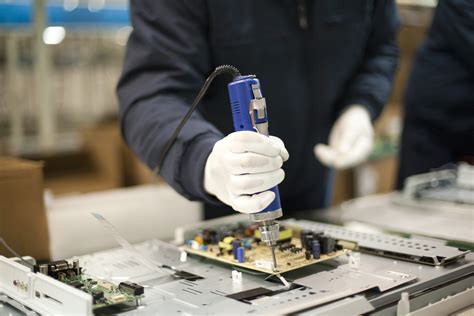
Case Studies: Successful Implementation of Streamlined Processes
In today’s competitive landscape, numerous companies have embraced innovative techniques to transform their pcb assembly lines, resulting in remarkable improvements in efficiency and productivity. One notable case is a leading electronics manufacturer that adopted an integrated automation system for their pcba processes. By utilizing robotic arms and advanced inspection technologies, they achieved a significant reduction in assembly time while enhancing accuracy. Additionally, another example illustrates the impact of Lean manufacturing principles applied to the electronics assembly process. This approach not only streamlined operations but also fostered a culture of continuous improvement among staff, leading to dramatic cuts in material waste. The success observed in these cases underscores the pivotal role that strategic process implementations can play in optimizing electronics manufacturing, as companies are continually discovering the value of adopting modern tools and methodologies tailored to their unique needs. Such case studies not only serve as inspiration but also highlight best practices that are becoming essential for businesses seeking to thrive in an ever-evolving industry.
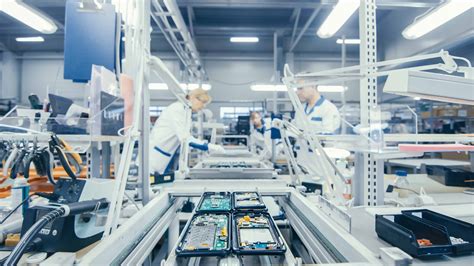
Future Trends in Electronics Assembly Efficiency
As the demand for faster and more reliable pcb assembly processes continues to rise, several future trends are poised to transform the landscape of electronics assembly. One noteworthy advancement is the integration of automation and robotics in pcba manufacturing. This technology not only enhances speed but also improves precision, minimizing human error and thereby increasing overall efficiency. Additionally, the implementation of artificial intelligence tools is becoming increasingly common within production lines, facilitating real-time monitoring and predictive maintenance. These tools analyze data from various stages of the assembly process, allowing manufacturers to identify bottlenecks and optimize workflow dynamically.
Moreover, the rise of smart factories is altering traditional manufacturing paradigms. By leveraging IoT (Internet of Things) devices, manufacturers can gather data from equipment and use it to assess performance metrics instantly. This transition towards a decentralized model enables better resource management and lower operational costs in pcb assembly operations. Another significant trend is the focus on sustainability within electronics manufacturing. Techniques such as lean manufacturing principles and waste reduction strategies are being prioritized, leading to not only more efficient workflows but also contributing positively to environmental sustainability.
In conclusion, as we move forward into this new era of electronics assembly efficiency, organizations must remain adaptable and embrace these innovations. By harnessing advanced technologies like automation, AI, and IoT—while concurrently committing to sustainable practices—manufacturers can achieve remarkable improvements in productivity while minimizing waste throughout their operations in pcba units.

Conclusion
In the pursuit of efficiency in electronics assembly, understanding the nuances of pcb assembly processes is crucial. The implementation of innovative techniques, such as modular assembly and automated inspection systems, greatly contributes to the overall productivity of pcba operations. By focusing on advanced tools that streamline workflows, manufacturers are able to not only enhance performance but also minimize errors that can lead to wastage. Additionally, adopting best practices for reducing waste can significantly impact production costs and environmental sustainability. Companies that embrace these strategic approaches position themselves not only to compete effectively in the market but also to create a more agile and responsive manufacturing ecosystem. As we move forward, it remains essential to continuously evaluate these practices and adapt to emerging trends in electronics assembly to uphold a commitment to quality and efficiency.
FAQs
Q: What is the importance of efficiency in pcb assembly?
A: Efficiency in pcb assembly is crucial as it directly affects the overall productivity and cost-effectiveness of manufacturing. Streamlined processes lead to quicker turnaround times and reduced operational costs.
Q: What innovative techniques can enhance pcba processes?
A: Techniques such as automation, modular design, and lean manufacturing practices have proven to significantly enhance pcba processes by minimizing bottlenecks and ensuring optimal resource utilization.
Q: How do advanced tools improve the electronics assembly process?
A: Advanced tools, such as automated pick-and-place machines and real-time monitoring systems, enhance precision and speed in the assembly process, leading to higher quality products with fewer errors.
Q: What best practices can be adopted to reduce waste in electronics manufacturing?
A: Best practices like continuous improvement, optimized material usage, and regular training for staff can substantially reduce waste while maintaining high-quality standards in electronics manufacturing.
Q: What strategic approaches are effective for boosting productivity in electronics assembly?
A: Implementing a culture of collaboration among team members, utilizing performance metrics to identify areas for improvement, and adopting flexible production schedules are effective strategic approaches to enhancing productivity in electronics assembly.





